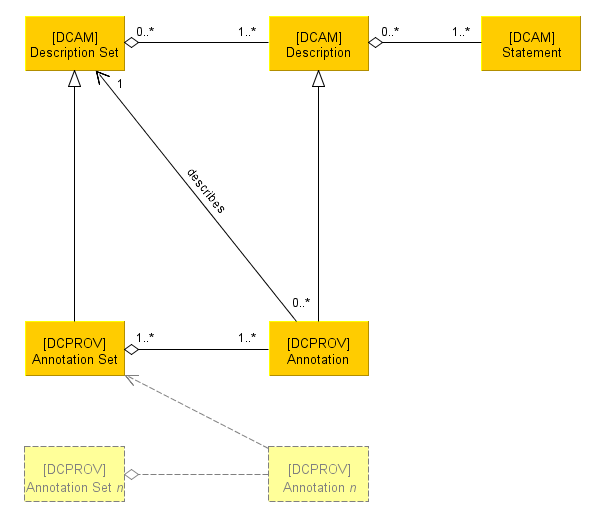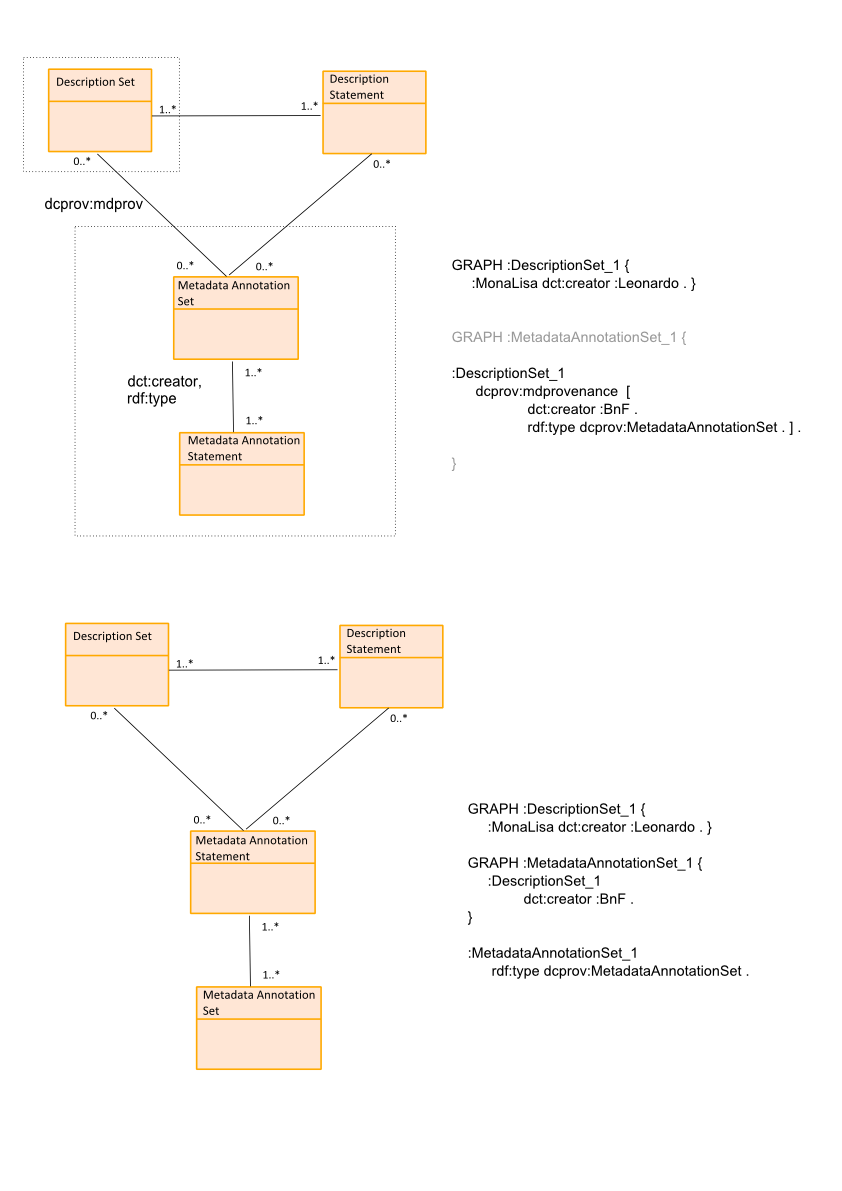This is an old revision of the document!
Table of Contents
Domain Model
Final first draft version, agreed upon January 26, 2011:
Namespaces:
- dcprov : Namespace of the domain model. To be defined
Classes:
- Description Set (from DCAM terminology): A set of one or more descriptions, each of which describes a single resource.
- Description (from DCAM terminology): One or more statements about one, and only one, resource.
- Statement (from DCAM terminology): An instantiation of a property-value pair made up of a property URI (a URI that identifies a property) and a value surrogate.
- Annotation: One or more statements about one description set.
- Annotation Set: A set of one or more annotations.
The domain model shown in the diagram is going to form the basis of an application profile for metadata provenance. The main purpose of the UML diagram is to illustrate
- how the new annotation entity (i.e., the entity comprising metadata provenance information) relates to the existing entities of the Dublin Core Abstract Model (DCAM), and
- how an annotation is associated with the metadata it provides information about.
At this point, the domain model does not attempt to describe the makeup of an annotation set in the context of metadata provenance, i.e., it does not yet provide an element vocabulary needed to put together a concrete annotation set.
What a metadata provenance annotation?
As stated in the UML diagram, an annotation
What does a metadata provenance annotation describe?
The first row reiterates the entities of the DCAM. The second row of the domain model contains the new classes required by the metadata provenance application profile, which in itself are specifications of their corresponding DCAM counterparts.
Issues and further Ideas
- Superclass of Description Set necessary? Domain/range problems in OWL, could be circumvented by property/chain inclusion?







